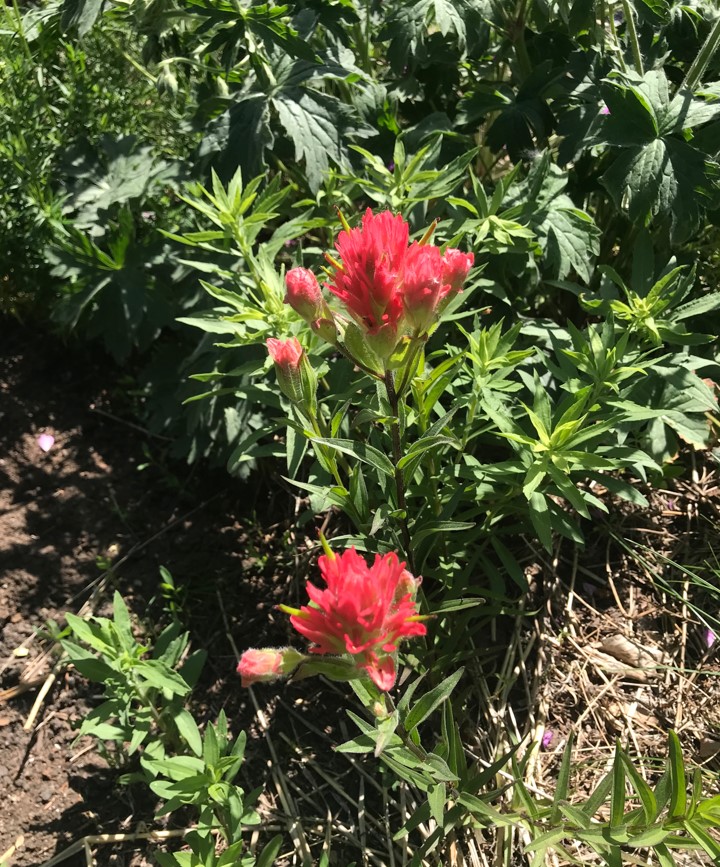The Paintbrush Appears!
Article and photo by Monika Smith
When I first thought about what plants I wanted in my grove, the number was well beyond ridiculous. Whitling down a list of hundreds to even 50 was a massive challenge—all without fine-tuning considerations of where to put them all and taking into account what they really needed: the amount of sun, shade, soil type, water.
One plant on my ‘must have’ list was the red paintbrush (Castilleja miniate), aka giant red paintbrush, often found along trails in K-Country. The flowers are inconspicuous; rather, we admire the brilliantly coloured bracts (modified leaves like poinsettias) that form the showy, terminal brush. There are other species that flower in pink, white, yellow, and orange. The giant red is found from Alaska to New Mexico and east to Ontario. Canada has 23 species.
But, little did I know that it has needs. Specialized needs. For a plant that grows in very different locations—from wind and sun-blasted roadsides to gracing the edges of shaded hiking trails, it should have been easy-peasy to get this plant settled and growing. No such luck.
Here’s where the plant gets fascinating. It’s partially parasitic. It needs to have a host for its root system to attach to for some of the nutrients it needs. It reproduces from seeds and is programmed to survive as it’s a short-lived perennial. Pairing the giant red with a native grass makes sense, and that’s how the plugs are usually sold. Native grasses are great survivors, going to seed quickly and moving on: two mutually beneficial plants in one plug.
The plant may have co-evolved with hummingbirds; it has the colour that the birds are attracted to, and tough flowers for hummingbird bills to get to the nectar. A variety of insects do visit, and act as pollinators, especially bees, which is surprising as the colour red is difficult for insects to see. Although the flowers are edible, it’s one of many plants in Alberta that takes up and stores selenium from the soil. While most of the selenium is in the greens, a big nosh is bad for you.
Three years ago, I planted giant red plugs sold with a grass companion. The grass burst out of the ground and I’m pretty sure succeeded in choking out the paintbrushes. It was hard to find more than a couple of plants struggling in a massive bunch of native grass. They didn’t come back the following year. I got the hint that they don’t like crowding and prefer an amiable host.
Three plugs, with a whisp of grass, were planted last fall and success in the spring! Three gorgeous plants, full of not red, but hot pink/magenta paintbrushes! Three more have gone in this spring, with the finer, less bully grass, with a lot of room around them.
Your help in the community association’s native perennial garden is welcome. Garden tours are being held this summer in Glendale! If you have a native garden or a garden full of perennials, vegetables, or fruits that you’d like to show off, please contact me.
Until next time,
Monika’s Grove

A giant red paintbrush! Castilleja miniate, in a hot pink reveal, finally growing in my yard. I’m still hoping for that candy apple red colour.
Click here to the Glendale Community News home page for the latest Glendale community updates.










